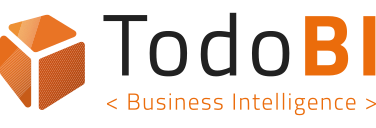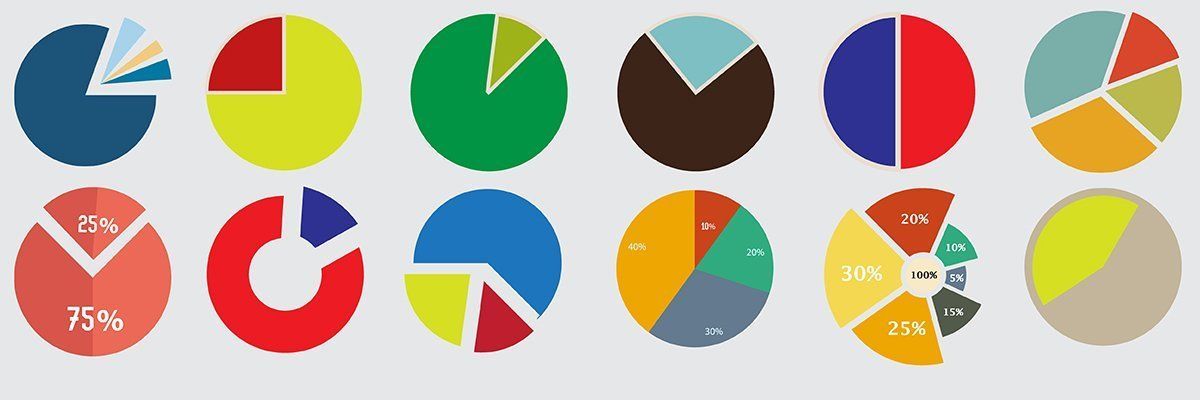Si queréis jugar con una Demo abierta , open source, para conocer y probar estos conceptos, es lo mejor para familiarizarse.
Glosario de Términos Business Intelligence:
- Automated Analysis: Automatic analysis of data to find hidden insights in the data and show users the answers to questions they have not even thought of yet.
- BI Analyst: As stated by modernanalyst.com, a data analyst is a professional who is in charge of analyzing and mining data to identify patterns and correlations, mapping and tracing data from system to system in order to solve a problem, using BI and data discovery tools to help business executives in their decision making, and perform statistical analysis of business data, among other things. (Can be called a data analyst too)
- BI Governance: According to Boris Evelson, from Forrester Research, BI governance is a key part of data governance, but if focuses on a BI system and governs over who uses the data, when, and how.
- Big Data: Enormous and complex data sets that traditional data processing tools cannot deal with.
- Bottlenecks: Points of congestion or blockage that hinder the efficiency of the BI system.
- Business Intelligence: According to Gartner , “Business Intelligence is an umbrella term that includes the applications, infrastructure and tools, and best practices that enable access to and analysis of information to improve and optimize decisions and performance.”
- Centralized Business Intelligence : A BI model that enables users to work connected and share insights, while seeing the same and only version of the truth. IT governs over data permissions to ensure data security.
- Collaborative BI: An approach to Business Intelligence where the BI tool empowers users to collaborate between colleagues, share insights, and drive collective knowledge to improve decision making.
- Collective Knowledge: Knowledge that benefits the whole enterprise as it comes from the sharing of insights and data findings across groups and departments to enrich analysis.
- Dark Data: According to Gartner, the definition for Dark Data is “information assets that organizations collect, process and store in the course of their regular business activity, but generally fail to use for other purposes”. 90% of companies’ data is dark data.
- Dashboards: A data visualization tool that displays the current enterprise health, the status of metric and KPIs, and the current data analysis and insights.
- Data Analyst: As stated by modernanalyst.com, a data analyst is a professional who is in charge of analyzing and mining data to identify patterns and correlations, mapping and tracing data from system to system in order to solve a problem, using BI and data discovery tools to help business executives in their decision making, and perform statistical analysis of business data, among other things.
- Data Analytics: According to TechTarget , “data analytics is the process of examining data sets in order to draw conclusions about the information they contain, increasingly with the aid of specialized systems and software.”
- Data Governance: According to Boris Evelson, from Forrester Research, data governance “deals with the entire spectrum (creation, transformation, ownership, etc.) of people, processes, policies, and technologies that manage and govern an enterprise’s use of its data assets (such as data governance stewardship applications, master data management, metadata management, and data quality).
- Data Mashup: An integration multiple data sets in a unified analytical and visual representation.
- Data Silos: According to Tech Target, a data silo is “data that is under the control of one department or person and is isolated from the rest of the organization.” Data silos are a bottleneck for effective business operations.
- Data Sources: The source where the data to be analyzed comes from. It can be a file, a database, a dataset, etc. Modern BI solutions like Necto can mashup data from multiple data sources.
- Data Visualization: The graphic visualization of data. Can include traditional forms like graphs and charts, and modern forms like infographics.
- Data Warehouse: A relational database that integrates data from multiple sources within a company.
- Embedded Analytics: The integration of reporting and data analytic capabilities in a BI solution. Users can access full data analysis capabilities without having to leave their BI platform.
- Excel Hell: A situation where the enterprise is full of unnecessary copies of data, thousands of spreadsheets get shared, and no one knows with certainty which is the most updated and real version of the data.
- Federated Business Intelligence: A BI model where users work in separate desktops , creating data silos and unnecessary copies of data, leading to multiple versions of the truth.
- Geo-analytic capabilities: The ability that a BI or data discovery tool has to analyze data by geographical area and reflect such analysis on maps on the user’s dashboard.
- Infographics: Visual representations of data that are easily understandable and drive engagement.
- Insights: According to Forrester Research, insights are “actionable knowledge in the context of a process or decision.”
- KPI: Key Performance Indicator . A quantifiable measure that a business uses to determine how well it meets the set operational and strategic goals. KPIs give managers insights of what is happening at any specific moment and allow them to see in what direction things are going.
- Modern BI: An approach to BI using state of the art technology, providing a centralized and secure platform where business users can enjoy self-service capabilities and IT can govern over data security.
- OLAP: Stands for Online Analytical Processing and it is a technology for data discovery invented by Panorama Software and then sold to Microsoft in 1996. It has many capabilities, such as complex analytics, predictive “what if” scenario planning, and limitless report viewing.
- Scalability: The ability of a BI solution to be used by a larger number of users as time passes.
- Self-Service BI: An approach that allows business users to access and work with data sources even though they do not have an analyst or computer science background. They can access, profile, prepare, integrate, curate, model, and enrich data for analysis and consumption by BI platforms. In order to have successful self-service BI , the BI tool must be centralized and governed by IT.
- Smart Data: Smaller data sets from Big Data that are valuable to the enterprise and can be turned into actionable data.
- Smart Data Discovery: The processing and analysis of Smart Data to discover insights that can be turned into actions to make data-driven decisions in an organization.
- Social BI: An approach where social media capabilities, such as social networking, crowdsourcing, and thread-based discussions are embedded into Business Intelligence so that users can communicate and share insights.
- Social Enterprise: An enterprise that has a new level of corporate connectivity, leveraging the social grid to share and collaborate on information and ideas. It drives a more efficient operation where problems are uncovered and fixed before they can affect the revenue streams.
- SQL: Stands for Standardized Query Language. It is a language used in programming for managing relational databases and data manipulation.
- State of the Art BI : The highest level of technology, the most up-to date features, and the best analysis capabilities in a Business Intelligence solution.
- Suggestive Discovery Engine: An engine behind the program that recommends to the users the most relevant insights to focus on, based on personal preferences and behavior.
- Systems of Insight: This is a term coined by Boris Evelson , VP of Forrester Research. It is a Business Intelligence system that combines data availability with business agility, where both IT and business users work together to achieve their goals.
- Workboards: An interactive data visualization tool. It is like a dashboard that displays the current status of KPIs and other data analysis, with the possibility to work directly on it and do further analysis.
Visto en el blog de
Panorama



